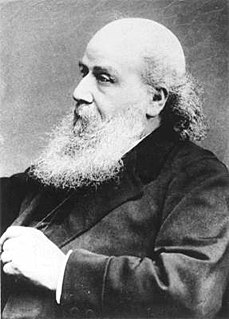Related Research Articles

An eclipse is an astronomical event that occurs when an astronomical object or spacecraft is temporarily obscured, by passing into the shadow of another body or by having another body pass between it and the viewer. This alignment of three celestial objects is known as a syzygy. Apart from syzygy, the term eclipse is also used when a spacecraft reaches a position where it can observe two celestial bodies so aligned. An eclipse is the result of either an occultation or a transit.

James Joseph Sylvester was an English mathematician. He made fundamental contributions to matrix theory, invariant theory, number theory, partition theory, and combinatorics. He played a leadership role in American mathematics in the later half of the 19th century as a professor at the Johns Hopkins University and as founder of the American Journal of Mathematics. At his death, he was a professor at Oxford University.

Sir Joseph Norman Lockyer was an English scientist and astronomer. Along with the French scientist Pierre Janssen, he is credited with discovering the gas helium. Lockyer also is remembered for being the founder and first editor of the influential journal Nature.

Nathaniel Bliss was an English astronomer of the 18th century, serving as Britain's fourth Astronomer Royal between 1762 and 1764.

Richard Lawrence Taylor is a British mathematician working in the field of number theory. He is currently the Barbara Kimball Browning Professor in Humanities and Sciences at Stanford University.

The Baily's beads effect or diamond ring effect is a feature of total and annular solar eclipses. As the Moon covers the Sun during a solar eclipse, the rugged topography of the lunar limb allows beads of sunlight to shine through in some places while not in others. The effect is named after Francis Baily, who explained the phenomenon in 1836. The diamond ring effect is seen when only one bead is left, appearing as a shining "diamond" set in a bright ring around the lunar silhouette.
Herbert Hall Turner FRS was a British astronomer and seismologist.
John Smith (1721–1797) was a Scottish physician and academic.
Abraham or Abram Robertson FRS, was a Scottish mathematician and astronomer. He held the Savilian Chair of Geometry at the University of Oxford from 1797 to 1809.

Sir Henry Savile was an English scholar and mathematician, Warden of Merton College, Oxford, and Provost of Eton. He endowed the Savilian chairs of Astronomy and of Geometry at Oxford University, and was one of the scholars who translated the New Testament from Greek into English. He was a Member of the Parliament of England for Bossiney in Cornwall in 1589, and Dunwich in Suffolk in 1593.

John Greaves was an English mathematician, astronomer and antiquarian.

Joseph Ivor Silk FRS is a British-American astrophysicist. He was the Savilian Chair of Astronomy at the University of Oxford from 1999 to September 2011.

The position of Savilian Professor of Astronomy was established at the University of Oxford in 1619. It was founded by Sir Henry Savile, a mathematician and classical scholar who was Warden of Merton College, Oxford, and Provost of Eton College. He appointed John Bainbridge as the first professor, who took up his duties in 1620 or 1621.

A solar eclipse occurs when the Moon passes between Earth and the Sun, thereby obscuring Earth's view of the Sun, totally or partially. Such an alignment coincides with a new moon, indicating the Moon is closest to the plane of the Earth's orbit. In a total eclipse, the disk of the Sun is fully obscured by the Moon. In partial and annular eclipses, only part of the Sun is obscured.

The Mathematical Institute is the mathematics department at the University of Oxford, England. It forms one of the twelve departments of the Mathematical, Physical and Life Sciences Division in the University. The department is located between Somerville College and Green Templeton College on Woodstock Road, next to the Faculty of Philosophy.

Dame Frances Clare Kirwan, is a British mathematician, currently Savilian Professor of Geometry at the University of Oxford. Her fields of specialisation are algebraic and symplectic geometry.

An annular solar eclipse will occur on Friday, November 4, 2078. A solar eclipse occurs when the Moon passes between Earth and the Sun, thereby totally or partly obscuring the image of the Sun for a viewer on Earth. An annular solar eclipse occurs when the Moon's apparent diameter is smaller than the Sun's, blocking most of the Sun's light and causing the Sun to look like an annulus (ring). An annular eclipse appears as a partial eclipse over a region of the Earth thousands of kilometres wide. The path of annularity will cross Pacific Ocean, South America, and Atlantic Ocean. The tables below contain detailed predictions and additional information on the Annular Solar Eclipse of 4 November 2078.

The position of Savilian Professor of Geometry was established at the University of Oxford in 1619. It was founded by Sir Henry Savile, a mathematician and classical scholar who was Warden of Merton College, Oxford, and Provost of Eton College, reacting to what has been described by one 20th-century mathematician as "the wretched state of mathematical studies in England" at that time. He appointed Henry Briggs as the first professor. Edward Titchmarsh said when applying that he was not prepared to lecture on geometry, and the requirement was removed from the duties of the post to enable his appointment, although the title of the chair was not changed. The two Savilian chairs have been linked with professorial fellowships at New College, Oxford since the late 19th century. Before then, for over 175 years until the middle of the 19th century, the geometry professors had an official residence adjoining the college in New College Lane.
John Caswell was an English mathematician who served as Savilian Professor of Astronomy at the University of Oxford from 1709 until his death.
Professor John Leigh Smeathman was a mathematician and Principal of East London College, England, one of the founding colleges of what is now Queen Mary College, part of London University. He was also Vice Chancellor of London University in the 1930s.
References
- ↑ Wilson, Robin, ed. (2022). Oxford's Savilian Professors of Geometry: The First 400 Years. Oxford University Press. pp. 55, 71, 74–75, 93, 236, 261. ISBN 978-0198869030.
- ↑ Darwall-Smith, Robin (2008). "13 – Glory and Decline: 1764–1807". A History of University College, Oxford. Oxford University Press. pp. 274–278. ISBN 978-0-19-928429-0.
- ↑ "Print (Engraving) of the Annular Solar Eclipse of 1 April, 1764, by Joseph Betts, engraved by Cole, Oxford, c. 1764". UK: History of Science Museum, Oxford . Retrieved 3 May 2022.